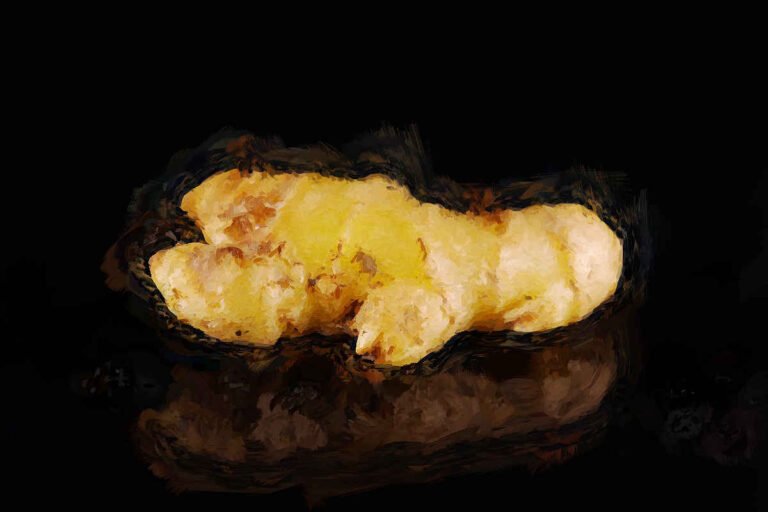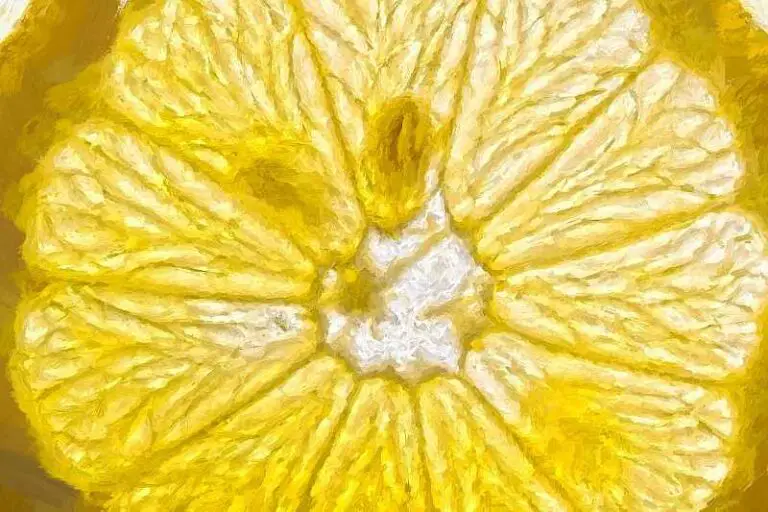Ferment Watermelon Juice Into Soda, Wine and Vinegar
Be it Summer or Winter it’s always the right time for some healthy and refreshing fermented watermelon juice recipes. Ready?
I don’t know how it is for you, but one of the things we love the most about fermentation is the ability to create very different products using the exact same ingredients.
Take watermelon for example.
Beside being zero waste it is also incredibly versatile.
You can ferment the rinds in savoury or sweet ways and turn the juice into pretty much anything from alcohol free soda to vinegar and everything in between.
All this by using the same ingredients: sugar, temperature and the “invisible” one called time.
In fact all you need to do to achieve different results is playing around with amounts and duration, that’s all.
So in this blog post we will show you how to easily make
- fizzy watermelon soda
- watermelon wine ( or cider )
- watermelon vinegar
just from watermelon juice and without needing any special equipment.
Some jars, an airlock and a carboy ( if you wish ) are really all you need; that’s how minimalist this is.
Ready?
BTW if you happen to bump into an elder in full bloom YOU MUST TRY our elderflower lemonade and champagne recipe.
And if you have only lemons use one of these 6 lemonade recipes to make your Summer shine.
Prepare The Watermelon
If you know how to pick the ripest watermelon either from the field or the supermarket ( I don’t… ) go with that one; it will be juicy and, more importantly, sweet.
Natural sweetness in the fruit obviously means it already contains a good amount of fructose which also means we won’t need to add as much sugar for fermentation.
As per usual organic is better than sprayed but if conventional is all you can buy it’s fine, don’t worry.
If you are wondering which variety suits the purpose better the answer is “I don’t know”.
We just use what’s available to us and we have never had an issue, so I would say you could do the same.
Same goes for seeds.
Seedless watermelons are great, as long as they are sweet and juicy, but those with seeds are equally good.
We will just work around them and in some cases even leave them for the fermentation process as they are very nutritious.
Which part of the watermelon do we use?
The red and juicy pulp.
In order to separate if from the rinds, which you can use as we suggested in the post dedicated to that, proceed as follows.
Cut the watermelon in a half, carve out the red flesh with a spoon and place it in a container ready to be used.
Alternatively slice the watermelon, lay the slices sideways on a chopping board and, with a knife, cut around the red part.
And don’t worry if some rind will remain attached, we are fermenters, not heart surgeons!
Equipment
As I mentioned above you really do not need any special equipment.
BUT if you own a high speed blender, a food processor or a juice extractor, this is the time to take it out of the cupboard.
If you happen not to own one don’t let that stop you; you will use the appliances you have and the result will be equally good.
And now we can finally get started with making something.
Let’s begin with making fermented lemonade by turning watermelon juice into a fizzy soda first.
Fermented Watermelon Soda
In Summer with the heat making life uncomfortable this drink will literally save your day ( and sanity ).
INGREDIENTS
- 1L / 1 qt of freshly squeezed watermelon juice
- 2 tablespoons of sugar
- ( optional ) 1 tbsp of sourdough starter, or whey, or kefir soda
- 3cm / 1 inch of fresh ginger
STEPS
- Squeeze the watermelon to extract its juice and place it in a jar
- Add the sugar and the fresh ginger ( grated )
- ( optional ) add the starter
*** if you used a starter you can immediately seal the jar and start the fermentation process ***
- Cover with a cloth and leave for 48 hours at room temperature stirring occasionally
- Seal the jar and let it ferment for 48 hours at room temperature
- Pour the liquid in plastic bottles adding 1 small teaspoon of sugar per litre/quart
- Seal the bottles and let them ferment for 24-48 hours at room temperature
- Refrigerate
DONE!
This is really how simple it is.
TIPS
Please make sure to only use plastic bottles and skip the glass ones completely because they are at risk of exploding.
Unless you are using Bormioli Fido jars, it is recommended to slightly unscrew the lid every day to release some CO2.
Because every watermelon juice will be different the best thing to do to make sure you are brewing a drink you will enjoy is to taste it beforehand.
If it’s too bland or slightly unripe you might have to help it with more sugar.
After bottling give the watermelon soda a taste after 24 hours: is it carbonated enough? Is it still too sweet? Can you taste some tang?
If it has reached a flavour profile you are happy with, place it inside the refrigerator: the cold temperature will almost completely stop the fermentation process.
And FINALLY the moment of drinking it has come, so how do you do that?
Well I think there are as many great combinations as there are ingredients out there, but I can definitely share with you a couple that work very well.
If you are into alcoholic drinks and aperitivo you will LOVE mixing this fermented watermelon soda to create amazing fermented cocktails.
To make it even more special add a slice of fresh chilli to your glass.
A-MA-ZING
And if you don’t drink alcohol?
Fermented Watermelon Lemonade
For the alcohol free peeps, serving watermelon soda as a fermented watermelon lemonade is an absolute must.
The process is so simple that it will take you longer to read it than to make it.
STEPS
- Place some ice cubes in a glass
- Add some watermelon soda
- Add some sparkling water or ginger beer
- Squeeze as much lemon or lime as you like
- Complete with a couple of fresh mint leaves or lemon verbena leaves
It goes without saying that watermelon soda is just as fantastic and refreshing as is or diluted with some water.
Plenty of great options for you to enjoy it.
And if you are interested in more refreshingfermented drinks give a look at these:
→ Russian Beetroot Kvass
→ Russian Bread Kvass
→ Pineapple Tepache
Join Our Community
Watermelon Wine – Alcoholic
Just a little more sugar and a little more time and you can magically transform watermelon juice into alcoholic wine.
*** the recipe will work with any amount of juice you have extracted ***
INGREDIENTS
- Watermelon juice
- Sugar
- Starter or commercial yeast
STEPS TO MAKE THE STARTER
- Prepare a cup of watermelon juice
- Add 2 teaspoons of sugar
- Pour everything in a jar and seal
- Ferment for 3-4 days at room temperature
- Give the jar a vigorous shake every day
When you begin to see froth or bubbles on the surface of the liquid you’ll know that fermentation has started.
Wait one more day and taste your starter.
If it tastes good it means you have isolated “good flavouring” wild yeasts which will deliver and equally good tasting wine.
If it does not taste great it’s possible that some of the “meh flavouring” yeasts have been the winning ones in colonising the liquid.
It happens.
So if your happy with the taste you are now good to proceed with the next phase of watermelon wine making.
But if the flavour of the starter is “meh”, you need to make a new one or opt for commercial yeast instead.
Good champagne yeast always guarantees good results.
STEPS TO MAKE WATERMELON WINE
- Prepare all the freshly squeezed juice in a large bowl
- Add 100 gr ( ½ a cup ) of sugar per litre ( quart ) and stir well
- Add the previously made starter or the champagne yeast
- Pour the mix into a carboy or any other container of your choice
- Seal with an airlock
- Ferment until the activity in the airlock has completely stopped
*** at this point your watermelon wine is ready to be bottled. Mind you it will be completely still ( zero bubbles ) so if your goal is to render a sparkling wine proceed as follows ***
→ IMPORTANT: only use glass bottles that can withstand pressure ( like those used for prosecco, champagne or lambrusco )
- Prime every bottle with a small teaspoon of sugar before bottling the wine
- Seal and let it ferment for a few more days
Both watermelon wines, still and sparkling, are now ready to be drunk even though is worth remembering that ageing would make the flavour profile even nicer.
And if you wish to brew a more alcoholic version, similar to grape wine, you can read how to do it in this tutorial.
Watermelon wine is not just delicious to drink, it’s also beautiful to look at.
Use a transparent white glass bottle and it will look exactly like one of those really expensive rosé wines from Italy or France they sell at the store.
So why not showing off your work at the next dinner party?
A word of advice.
If you made a sparkling watermelon rosé you should expect a lot of “spumeggio” ( froth ) every time you open a bottle.
Reason is that just like many renowned wines, yours too has gone through a re-fermentation process inside the bottle.
Open it outdoors, on top of your sink or place the bottle for a few hours inside the refrigerator before uncorking it.
Watermelon Vinegar
A little more time and a switch from anaerobic to aerobic fermentation and voilá; watermelon vinegar is on its way.
Just like with all the other homemade fruit vinegars you will need to follow the first steps of wine/cider making.
For our watermelon vinegar we will begin the process by using the recipe above where we have just made wine,
BUT this time you will stop the wine making process BEFORE bottling, which happens when the activity in the airlock has zeroed.
So let’s assume the first fermentation ( anaerobic ) is completed and let’s proceed with the second fermentation ( aerobic ) that will actively make vinegar.
*** to effectively make vinegar you need oxygen, and a lot of it. If you used a carboy or another small mouth container for the first fermentation you will have to switch to one with a big mouth ***
STEPS
- Remove airlock and stir the liquid vigorously
- Cover the container with a cloth or a piece of paper towel
- Allow to ferment at room temperature for 3-4 weeks
TIPS
The warmer the temperature in your home the faster acetobacters will turn watermelon wine into vinegar, but a minimum of 3-4 weeks is usually necessary.
After that amount of time the liquid should have a distinct vinegar smell and a more or less pronounced vinegar taste.
At this point it is a good idea to taste the vinegar daily until it reaches the acidity you are happy with.
If you desire to speed up the vinegar making process use the simplest method of all: stirring.
Every day during the first week ( or for longer if you feel the need ) just stir the liquid vigorously for at least 30 seconds.
By doing so you will be able to trap good amounts of oxygen inside the liquid .
And that’s it.
From watermelon juice, to fermented soda ( and lemonade ), to watermelon wine and, lastly, watermelon vinegar.
All of this by playing with sugar, time and temperature.
Isn’t it great?
Personally I think it is.
Have a wonderful day and see you soon.

Fermented Watermelon Soda
Ingredients
- 1 L freshly squeezed watermelon juice
- 2 tablespoons of sugar
- optional 1 tbsp of sourdough starter, or whey, or kefir soda
- 3 cm of fresh ginger
Instructions
- Squeeze the watermelon to extract its juice and place it in a jar
- Add the sugar and the fresh ginger ( grated )
- ( optional ) add the starter
- *** if you used a starter you can immediately seal the jar and start the fermentation process ***
- Cover with a cloth and leave for 48 hours at room temperature stirring occasionally
- Seal the jar and let it ferment for 48 hours at room temperature
- Pour the liquid in plastic bottles adding 1 small teaspoon of sugar per litre/quart
- Seal the bottles and let them ferment for 24-48 hours at room temperature
- Refrigerate







